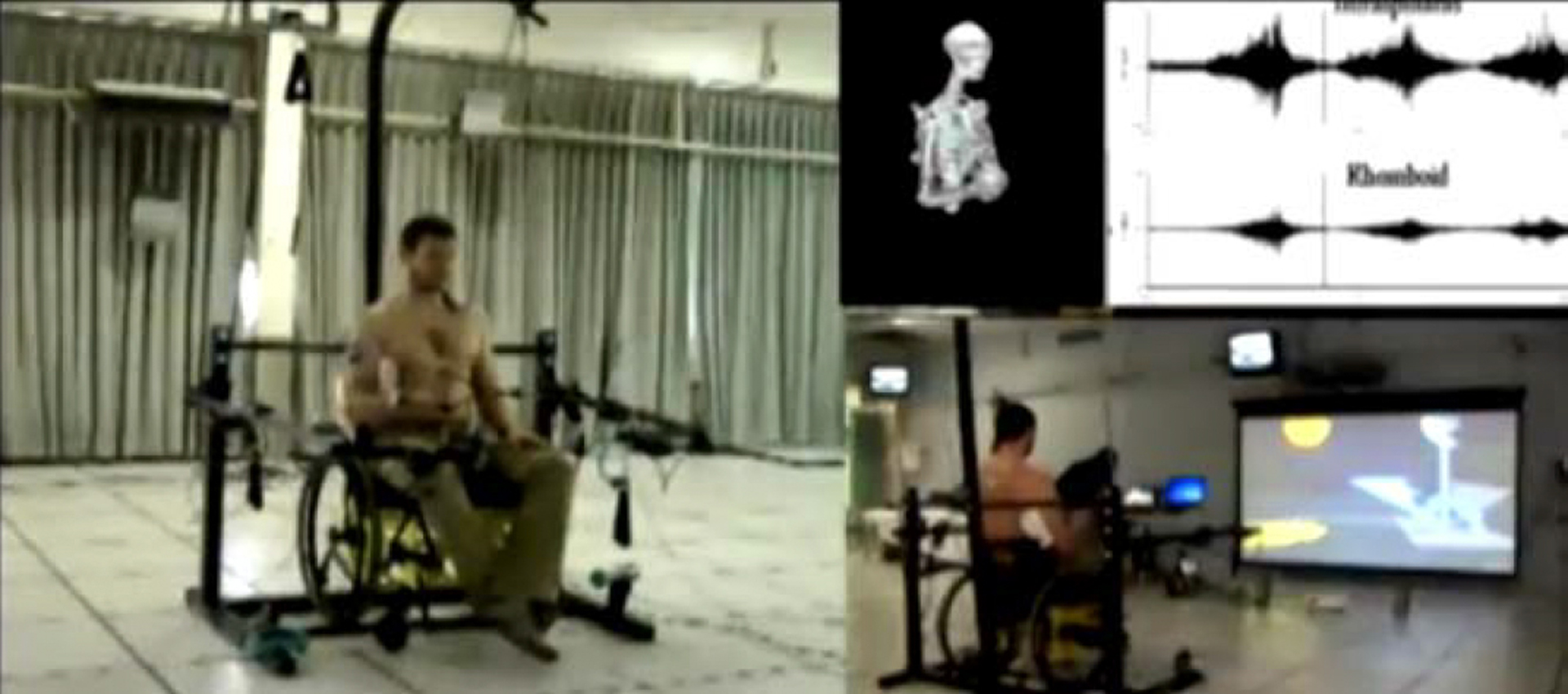“Skyfarer: A Mixed Reality Shoulder Exercise Game” by Gotsis, Lympouridis, Turpin, Frangoudes, Maneekobkunwong, et al. …
Conference:
- SIGGRAPH 2013
-
More from SIGGRAPH 2013:


Type(s):
Entry Number: 13
Title:
- Skyfarer: A Mixed Reality Shoulder Exercise Game
Presenter(s): Presenter(s):
Description:
Skyfarer is a mixed reality shoulder exercise game developed for prevention and treatment of shoulder pain for individuals aging with spinal cord injury. We are adapting a shoulder exercise protocol that has been evaluated in a randomized clinical trial [Mulroy et al. 2011]. This demonstration will showcase a second-generation integrated exercise hardware and software system. The system consists of an adjustable metal rig outfitted with GameTrak sensors that are attached to interchangeable Thera- Bands and free weights. The rig can accommodate individuals with various types of manual wheelchairs and can be adjusted for arm length. The GameTrak sensors provide three-dimensional movement data to the calibration and exercise software application that was developed in Unity Engine 3.5.
References:
GOTSIS, M., LYMPOURIDIS, V., TURPIN, D., TASSE, A., POULOS, I.C., TUCKER, D., SWIDER, M., THIN, A.G., AND JORDANMARSH., M. 2012. Mixed Reality Game Prototypes for Upper Body Exercise and Rehabilitation. In Proceedings of the 2012 Virtual Reality. IEEE, 181-182.
MULROY, S. J., THOMPSON, L., KEMP, B., HATCHETT, P. P., NEWSAM, C. J., LUPOLD, D. G., HAUBERT, L. L., EBERLY, V., GE T. T., AND AZEN S. P. 2011. Strengthening and Optimal Movements for Painful Shoulders (STOMPS) in Chronic Spinal Cord Injury: A Randomized Controlled Trial. Phys. Ther. 91(3), 305-324. 2011.
Additional Images:

Acknowledgements:
The contents of this research paper were developed under a grant from the Department of Education, NIDRR grant number H133E080024. However, those contents do not necessarily represent the policy of the Department of Education, and you should not assume endorsement by the Federal Government. The authors would like to thank Carolee Winstein, Phil Requejo, Sara Mulroy, Lisa Haubert, the OPTT-RERC investigators, the members of the Rehabilitation Engineering and Pathokinesiology Laboratory for their assistance and input in the design and evaluation of Skyfarer, Evan Stern for additional programming and Tristan Dyer for concept art.





